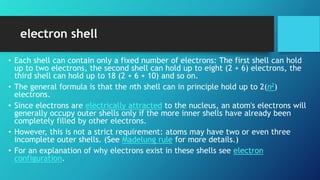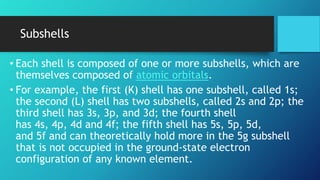The document provides information about the periodic table of elements and related concepts:
1) The periodic table arranges the chemical elements by atomic number and electron configuration, showing periodic trends in properties. Elements are grouped into blocks by their electron configurations and periods by the filling of electron shells.
2) Key concepts discussed include atomic number, electron configuration, chemical properties, periodic trends, metals, nonmetals, groups such as halogens and noble gases, periods, and shells and subshells.
3) Dmitri Mendeleev is credited with publishing the first recognizable periodic table in 1869, organizing known elements and predicting properties of undiscovered elements. His work established the basis for the modern periodic table
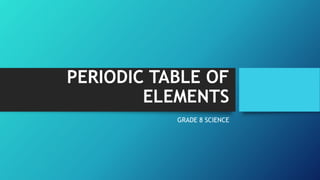

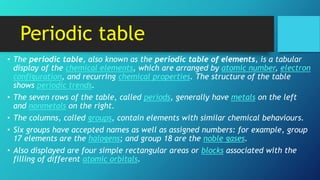

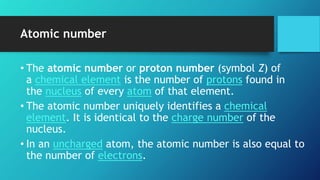



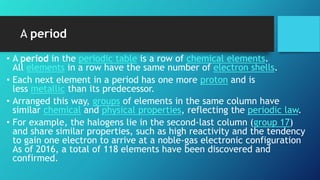

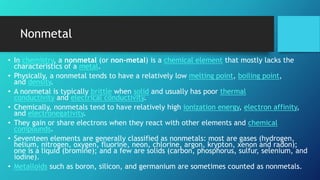
![Group
• In chemistry, a group (also known as a family[1]) is a column
of elements in the periodic table of the chemical elements.
• There are 18 numbered groups in the periodic table; the f-
block columns (between groups 3 and 4) are not numbered.
• The elements in a group have similar physical or chemical
characteristics of the outermost electron shells of their
atoms (i.e., the same core charge), because most chemical
properties are dominated by the orbital location of the
outermost electron.](https://image.slidesharecdn.com/grade8science-200328161043/85/Grade-8-SCIENCE-12-320.jpg)
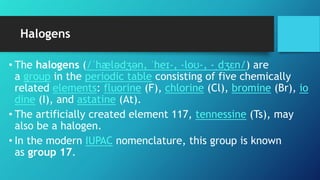

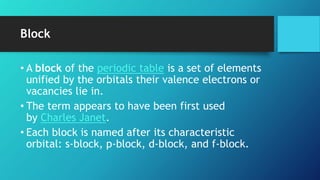



![Dmitri Ivanovich Mendeleev
• Dmitri Ivanovich Mendeleev (often romanized
as Mendeleyev or Mendeleef)
• 8 February 1834 – 2 February 1907 [OS 27 January 1834 – 20 January 1907]) was
a Russian chemist and inventor.
• He is best remembered for formulating the Periodic Law and creating a
farsighted version of the periodic table of elements.
• He used the Periodic Law not only to correct the then-accepted
properties of some known elements, such as the valence and atomic
weight of uranium, but also to predict the properties of eight elements
that were yet to be discovered.](https://image.slidesharecdn.com/grade8science-200328161043/85/Grade-8-SCIENCE-19-320.jpg)
![Electron configuration
• The electron configuration or organisation of electrons orbiting neutral atoms
shows a recurring pattern or periodicity.
• The electrons occupy a series of electron shells (numbered 1, 2, and so on).
• Each shell consists of one or more subshells (named s, p, d, f and g).
• As atomic number increases, electrons progressively fill these shells and subshells
more or less according to the Madelung rule or energy ordering rule, as shown in
the diagram. The electron configuration for neon, for example, is 1s2 2s2 2p6.
• With an atomic number of ten, neon has two electrons in the first shell, and
eight electrons in the second shell; there are two electrons in the s subshell and
six in the p subshell.
• In periodic table terms, the first time an electron occupies a new shell
corresponds to the start of each new period, these positions being occupied
by hydrogen and the alkali metals.[34][35]](https://image.slidesharecdn.com/grade8science-200328161043/85/Grade-8-SCIENCE-20-320.jpg)

